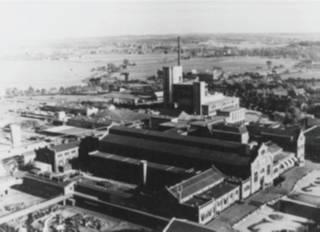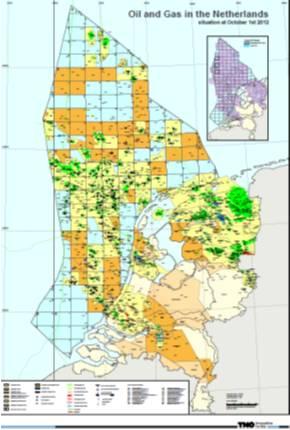An Introduction into the Sub-surface of the Netherlands | Herman van Os
Name: Herman van Os
Supervisor:
Prof. M.A. (Rien) Herber, Geo-Energy
The Netherlands has a long tradition when it comes to sub-surface activities. One of the first reported activities was the mining of coal in the province of Limburg in the south of the Netherlands in 17th century. In the 19th century the mining of salt followed. The discovery of oil and natural gas in the 20th century increased the activities in the sub-surface substantially. And now in the 21st century mankind has found even more way of using the sub-surface. These new activities included:
- Geothermal energy
- Natural gas storage
- CO2 storage
- Other forms of storage, like nuclear waste

Each of these sub-surface activities has is one spatial claim. These spatial claims are the product of technological requirements, economical preferences and social preferences. Due to the increasing demand from the society at large for the goods and services provided by sub-surface activities, the level in which the sub-surface of the Netherlands is being used is getting higher. A result of this ever-increasing demand for sub-surface space is a sub-optimal utilization of the sub-surface. The reasons for this are:
-
The possibility that one activity can interfere, due to the proximity, with the operations of another activity.
-
The possibility that one activity can be more efficient, due to synergy, when it is executed in cooperation with another activity.

In order to avoid problems with proximity and to stimulate synergy between activities, a comprehensive spatial plan for the sub-surface is needed in order to facilitate an optimal use of the sub-surface. Before such a spatial plan for the sub-surface can be implemented, a better understanding of the cost en benefits for a wide variety of sub-surface activities is needed.
PhD research
The aim of the research is to develop a method for accessing the cost and benefits for wide variety sub-surface activities. The cost and benefits will include technological, economical and social aspects of the sub-surface activities. Furthermore the assessment method will be designed to assist policymakers when implementing policies concerning sub-surface activities. By giving an insight in the need for and the merits of sub-surface activities.
Framing of the research
This PhD research is part of the broader efforts of the department of Geo-energy to gain knowledge in the field of spatial coordination of subsurface activities. Furthermore the PhD research is done in close cooperation with TNO, the ministry of Economic affairs, Innovation and Agriculture and the ministry of Infrastructure and Mobility.
| Last modified: | 13 October 2021 4.39 p.m. |
